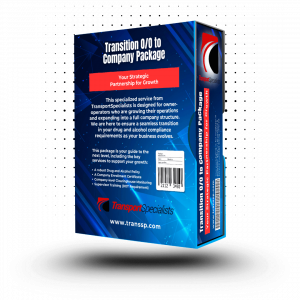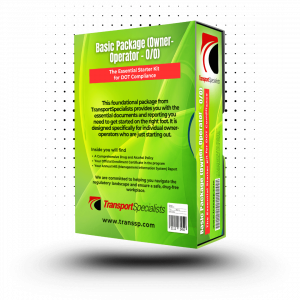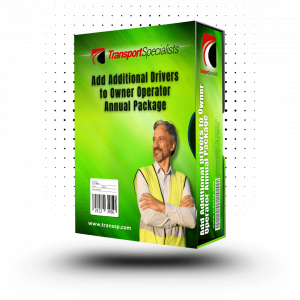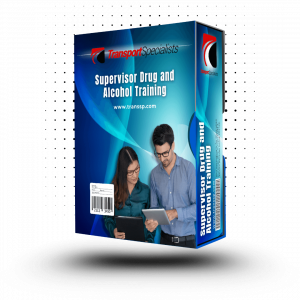The letter no carrier wants to receive: a notice from the Federal Motor Carrier Safety Administration (FMCSA) announcing an upcoming safety audit or compliance review. For many, this news sends a shiver down their spine, sparking fears of fines, out-of-service orders, or even a downgrade of their safety rating. But it doesn’t have to be this way.
The difference between a stressful, costly audit and a smooth, successful one is simple: preparation.
At TRANSSP, we believe that compliance shouldn’t be a source of anxiety. It should be a core strength of your business. This guide is designed to demystify the FMCSA audit process. We will walk you through what auditors look for, what triggers an audit, and provide a step-by-step checklist to ensure you are prepared, confident, and ready to pass with flying colors.
(Section 1: Understanding the Types of FMCSA Audits)
First, it’s important to know which type of audit you’re facing. While there are several variations, most carriers will encounter one of two primary reviews:
- New Entrant Safety Audit: This is the “first big test” for any new trucking company. Within your first 12 months of operation, the FMCSA will conduct this audit to verify that you have effective safety management systems in place. Passing this audit is mandatory to receive your permanent DOT registration.
- Compliance Review (CR): This is a more comprehensive investigation for established carriers. A CR is usually triggered by specific red flags, such as high CSA scores, a recent accident, or repeated roadside inspection violations. The outcome of a CR can directly impact your safety rating (Satisfactory, Conditional, or Unsatisfactory).
(Section 2: What Triggers an Audit?)
While the New Entrant Audit is a scheduled part of starting your business, a Compliance Review is often triggered by performance issues. Understanding these triggers is the first step in avoiding an unwanted audit altogether. Key triggers include:
- High CSA Scores: Consistent violations in any of the seven BASICs (Unsafe Driving, HOS Compliance, Vehicle Maintenance, etc.) will put you on the FMCSA’s radar.
- Accident Reports: A recent DOT-recordable accident can often trigger a review to investigate potential safety lapses.
- Roadside Inspection Failures: A pattern of failed inspections or out-of-service violations is a major red flag.
- Employee or Public Complaints: A formal complaint filed against your company can also initiate an investigation.
(Section 3: The Six Pillars of a Successful Audit: Your Ultimate Checklist)
Whether it’s a New Entrant Audit or a full Compliance Review, auditors will focus on six core areas of your operation. Think of these as the pillars of your compliance framework. If these are strong, your business is secure.
Pillar 1: Driver Qualification Files (DQFs) Your DQF is the official employment record for each driver. It must be complete and current.
- What you need:
- Completed and signed employment application.
- Motor Vehicle Record (MVR) requested from each state the driver was licensed in for the last 3 years.
- Documentation of a completed road test.
- A valid Medical Examiner’s Certificate (MEC).
- Verification of past employment (for experienced drivers).
- A negative pre-employment drug test result.
Pillar 2: Drug & Alcohol Program The FMCSA has zero tolerance for non-compliance here. You must prove you have a fully functional D&A program.
- What you need:
- A written Drug & Alcohol Policy provided to all drivers.
- Proof of pre-employment drug testing for every driver.
- Documentation of enrollment in a random testing consortium.
- Records of completed random tests.
- Proof of completed queries in the FMCSA Drug & Alcohol Clearinghouse (pre-employment and annual).
- Records of supervisor training for reasonable suspicion.
Pillar 3: Hours of Service (HOS) & ELDs Auditors will scrutinize your logs to check for compliance with driving limits and rest breaks.
- What you need:
- Complete and accurate ELD data for at least the last 6 months.
- Supporting documents to verify logs (fuel receipts, bills of lading, etc.).
- Proof that all unassigned driving miles have been resolved.
- No evidence of log falsification or “form and manner” errors.
Pillar 4: Vehicle Maintenance You must be able to prove that your fleet is safe and regularly inspected.
- What you need:
- A complete maintenance file for each truck and trailer.
- Records of regular, periodic inspections (annual DOT inspections).
- Driver Vehicle Inspection Reports (DVIRs) for the last 3 months.
- Proof that all reported defects have been repaired.
Pillar 5: Accident Register If you’ve had a DOT-recordable accident, you must maintain an accident register.
- What you need:
- A file containing the date, location, driver’s name, number of injuries/fatalities, and whether any hazardous materials were released.
- Copies of all accident-related documents.
Pillar 6: Insurance & Registration The basics must be in order.
- What you need:
- Proof of adequate liability insurance on file with the FMCSA.
- Your MCS-150 form must be updated at least every two years (or more frequently if your information changes).
(Section 4: Don’t Face an Audit Alone: How TRANSSP Can Help)
Reading this list can feel overwhelming, but it doesn’t have to be. Preparation is the key, and you don’t have to do it by yourself. At TRANSSP, we are specialists in FMCSA compliance and audit preparation.
We act as your dedicated compliance partner, helping you:
- Conduct Mock Audits: We perform a full review of your files just like an FMCSA auditor would, identifying weak spots before they become violations.
- Organize Your Files: We help you build and maintain perfect Driver Qualification Files and vehicle maintenance records.
- Manage Your D&A Program: We handle your random testing pool, Clearinghouse queries, and policy documentation.
An audit should be a confirmation of your commitment to safety, not a threat to your business.
(Conclusion)
Proactive compliance is one of the smartest investments you can make in your trucking business. By understanding what the FMCSA requires and keeping meticulous records in the six key pillars, you can face any audit with confidence.
If you’re preparing for a New Entrant Audit or have received notice of a Compliance Review, don’t leave it to chance.
Contact the TRANSSP team today for a pre-audit consultation. Email us at info@transsp.com and let’s make sure you’re ready to pass.





